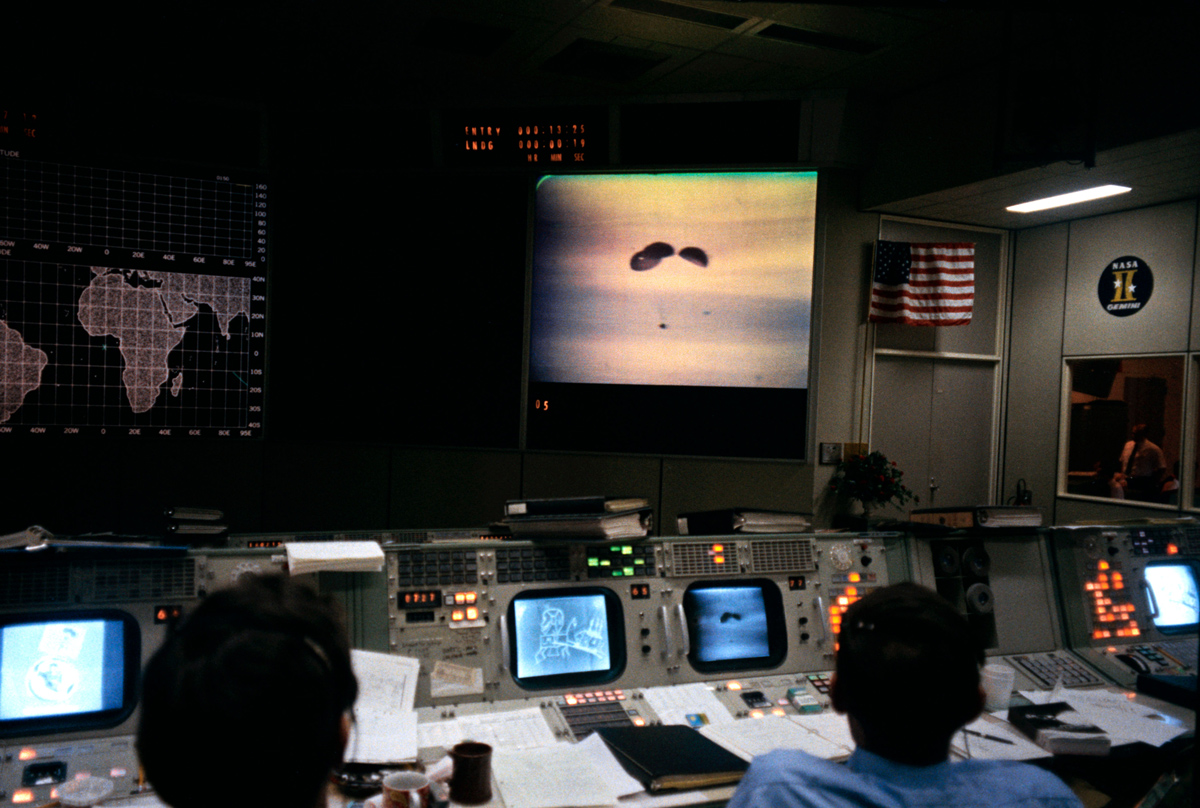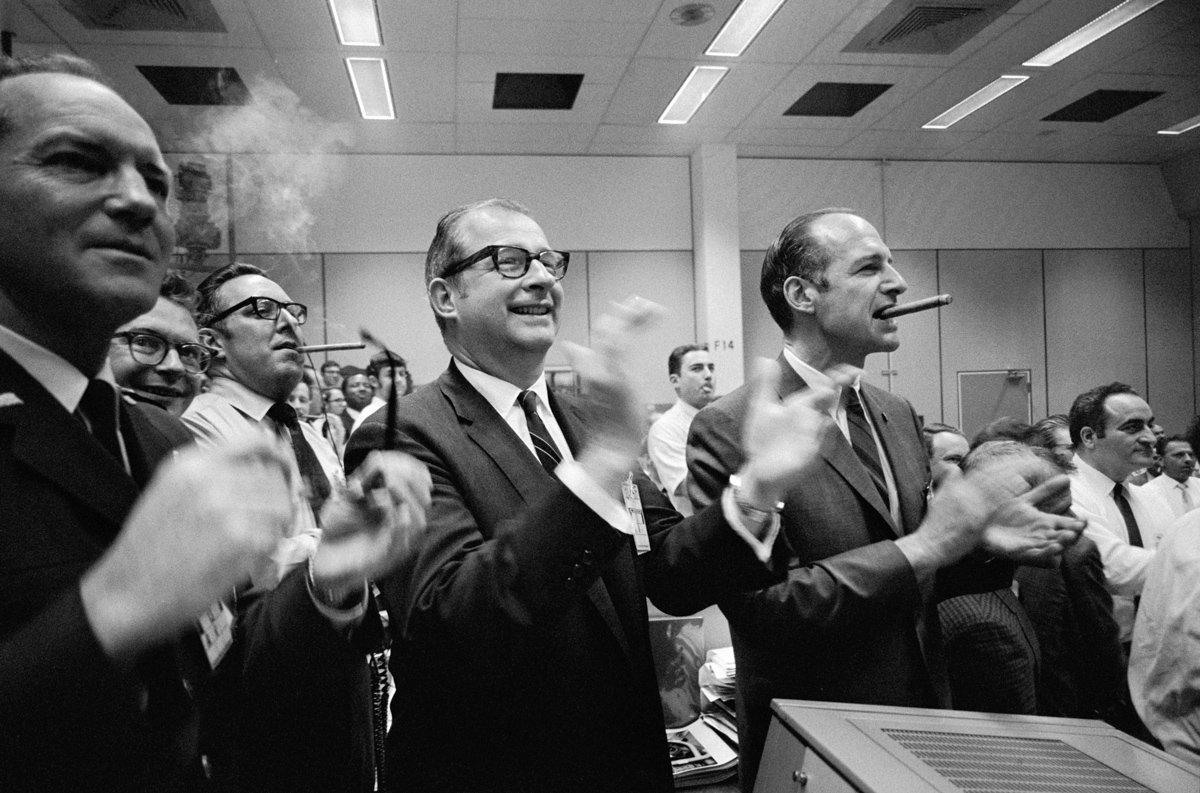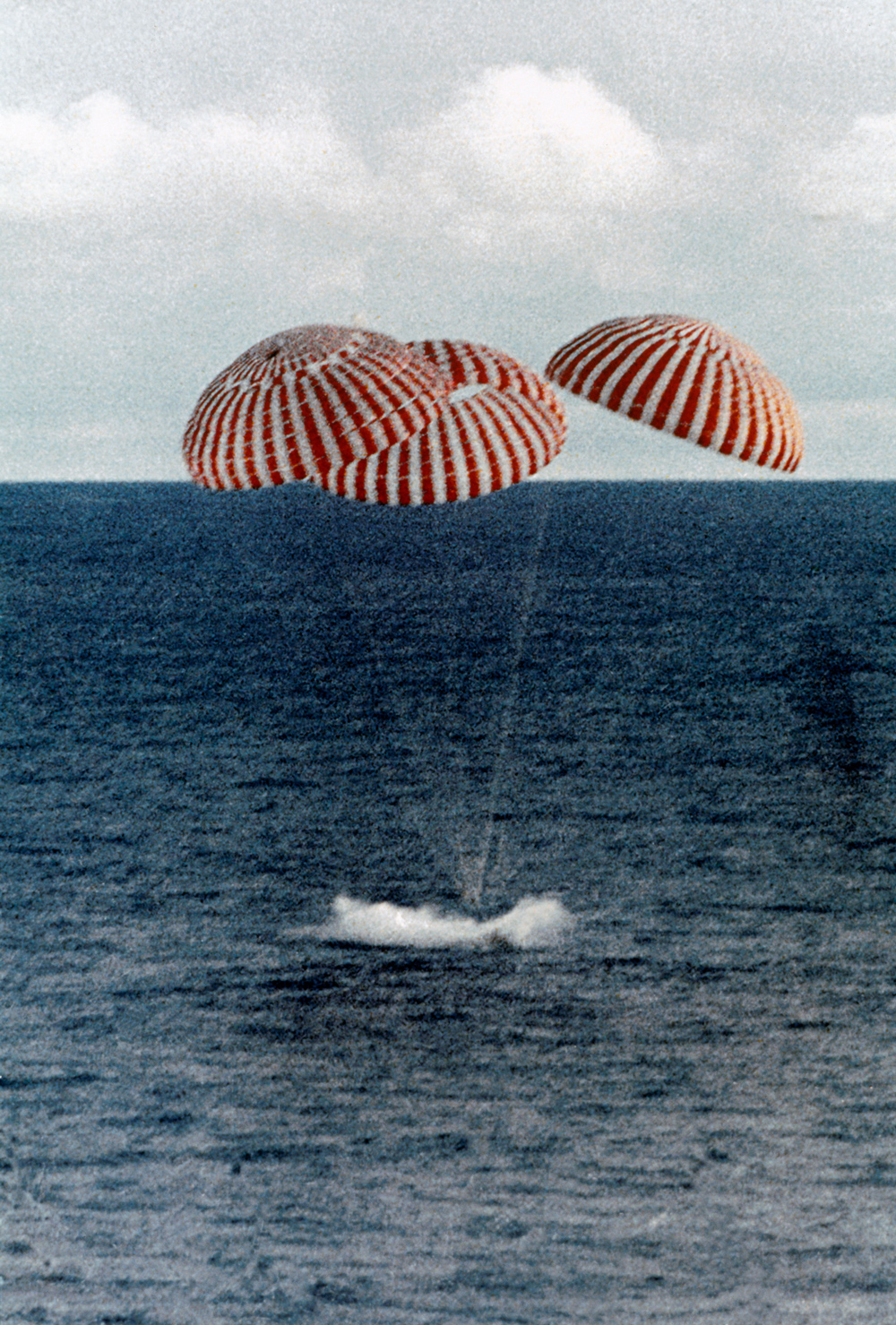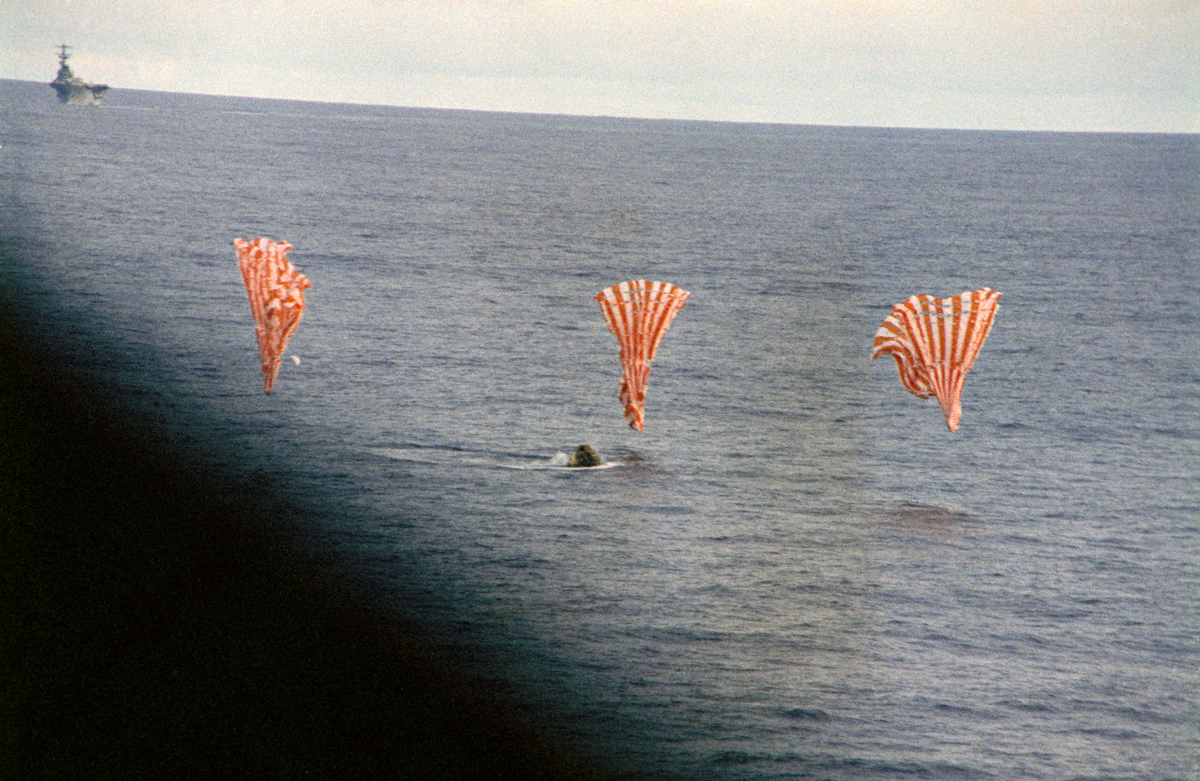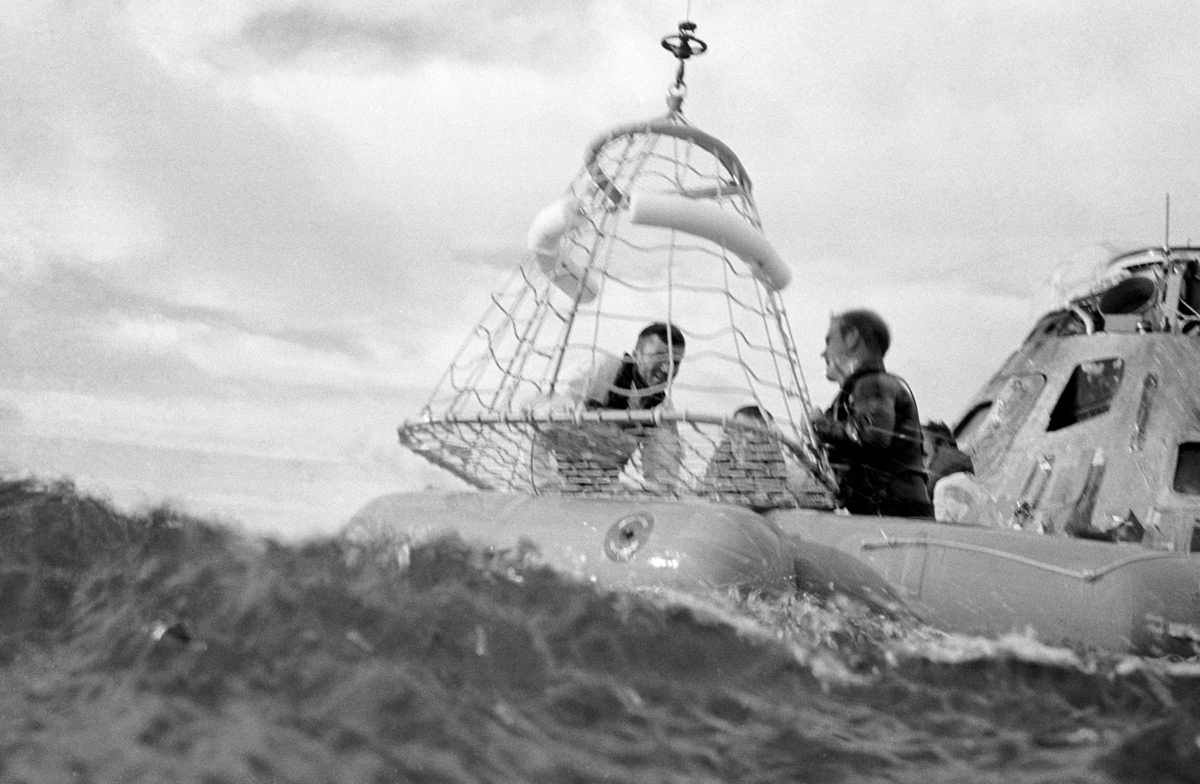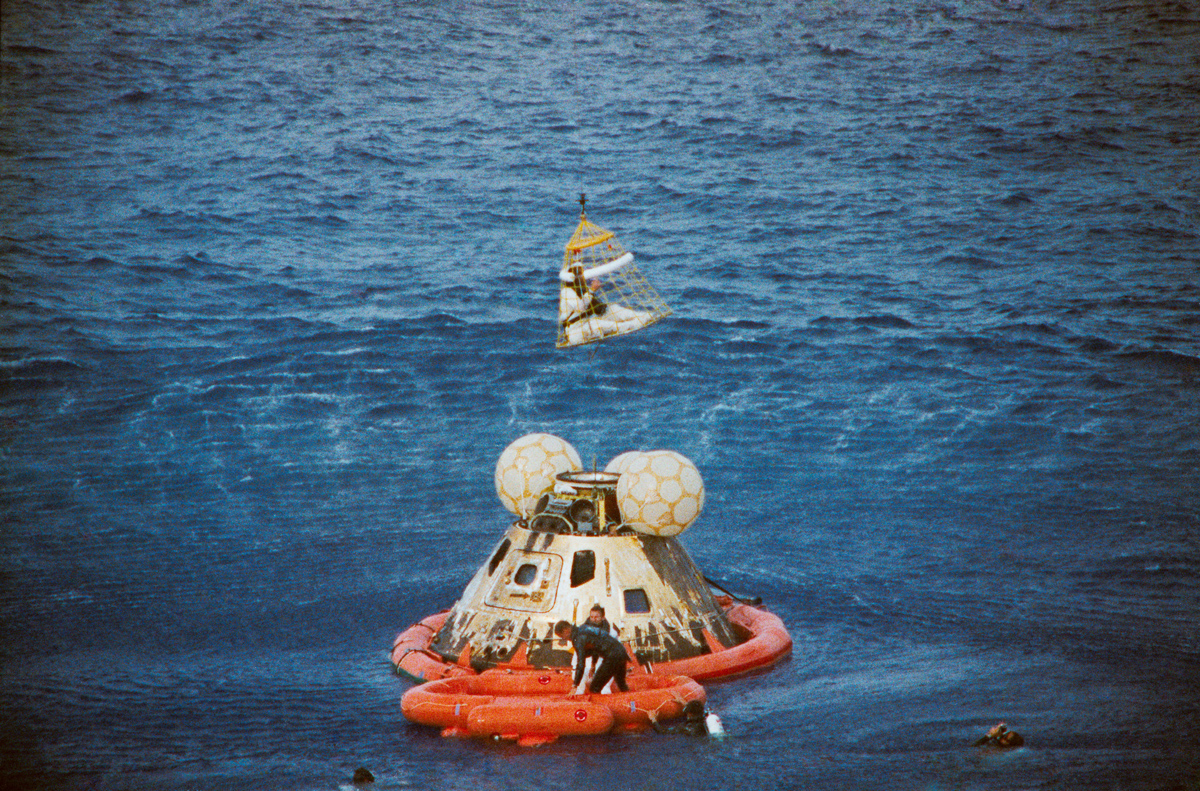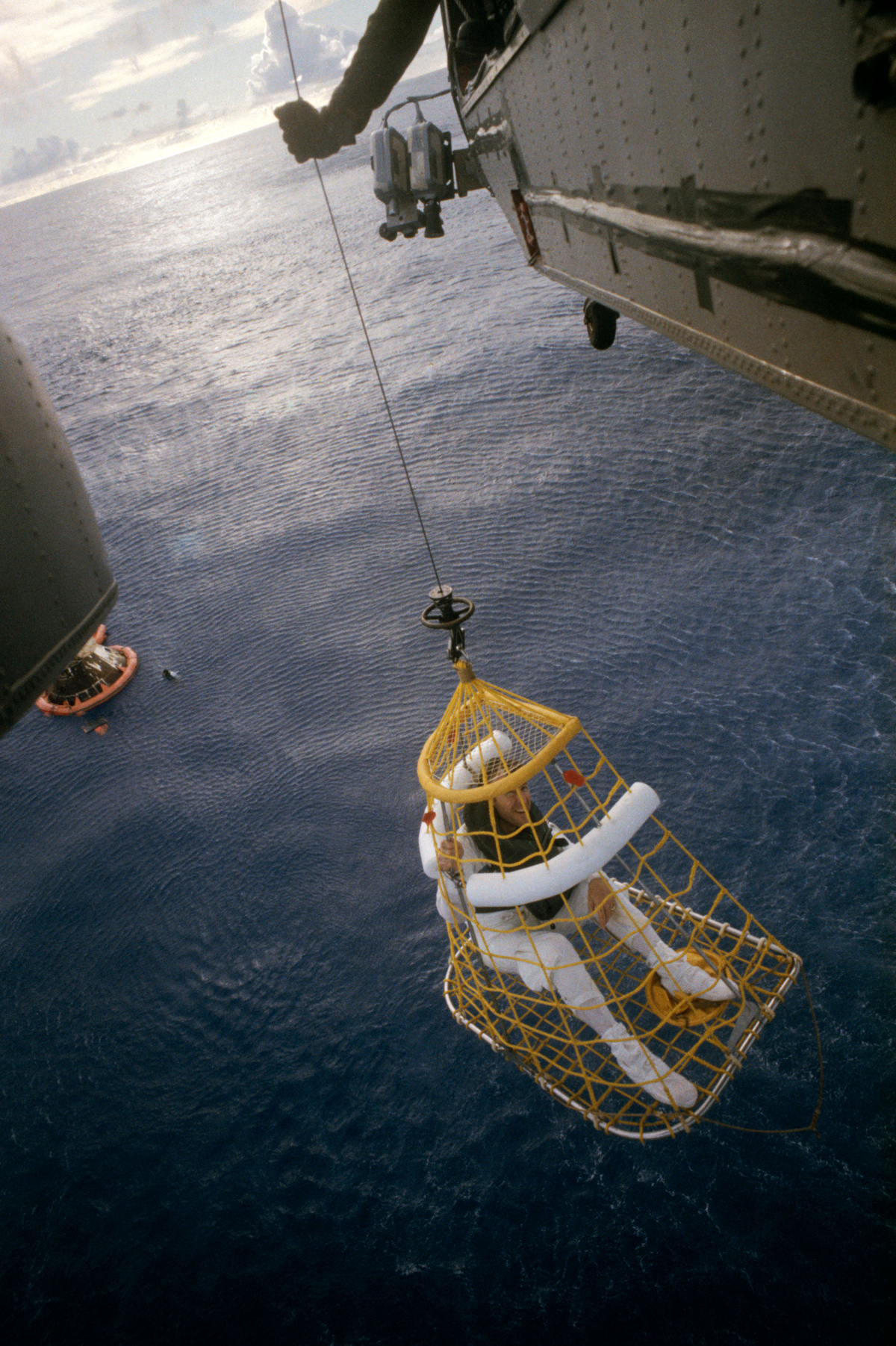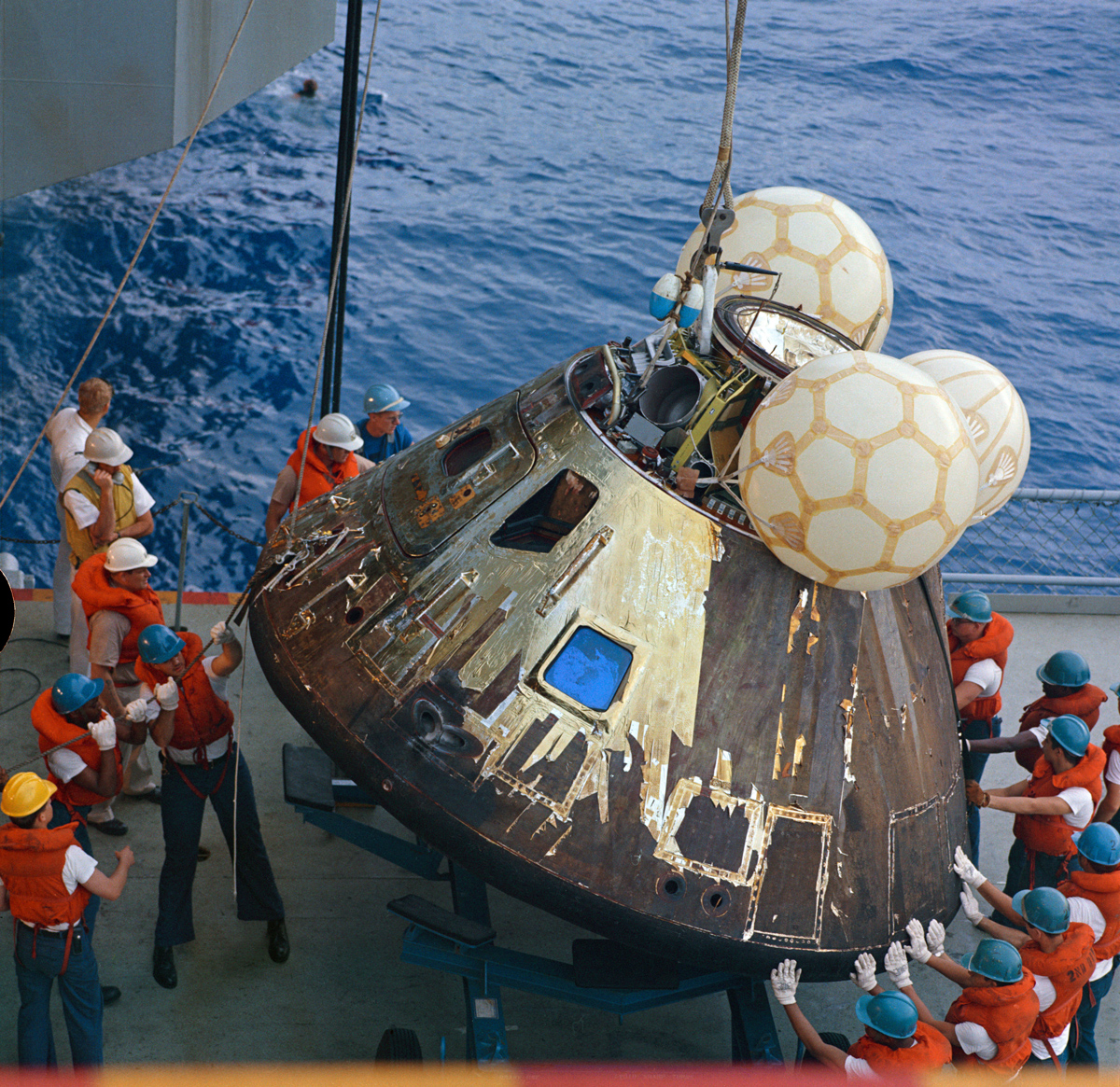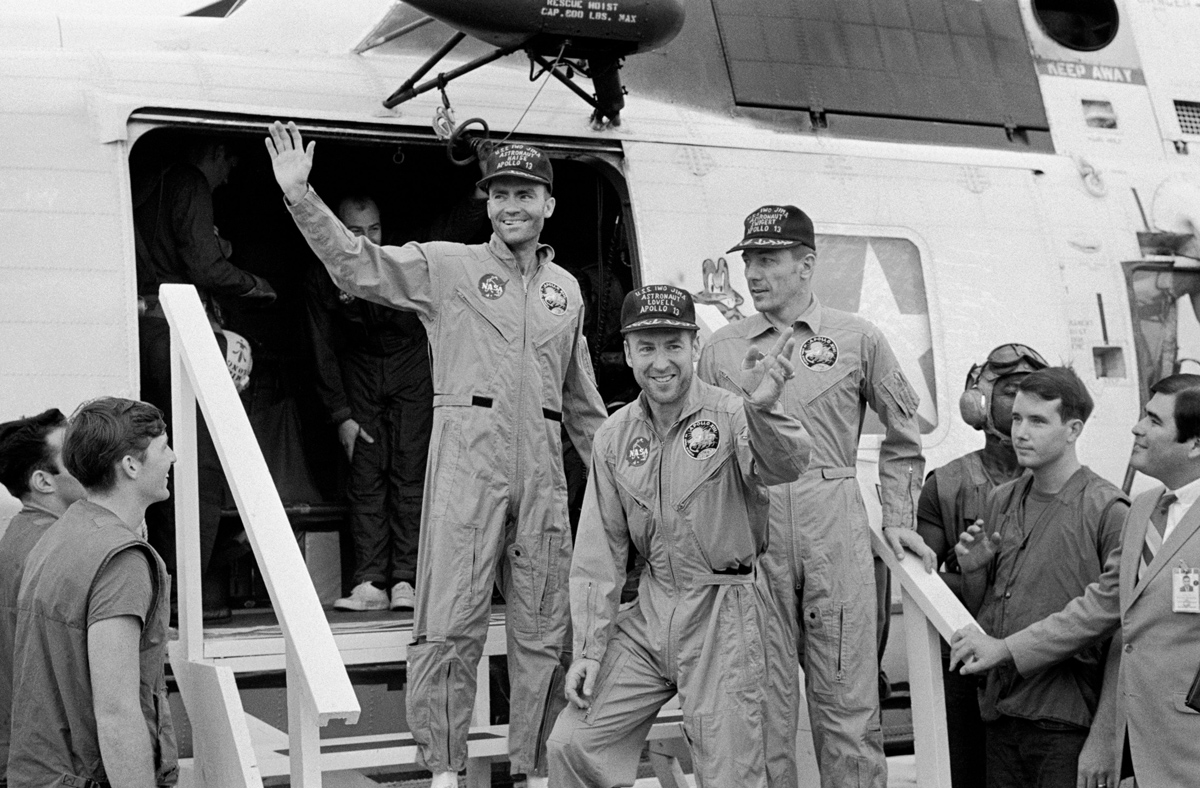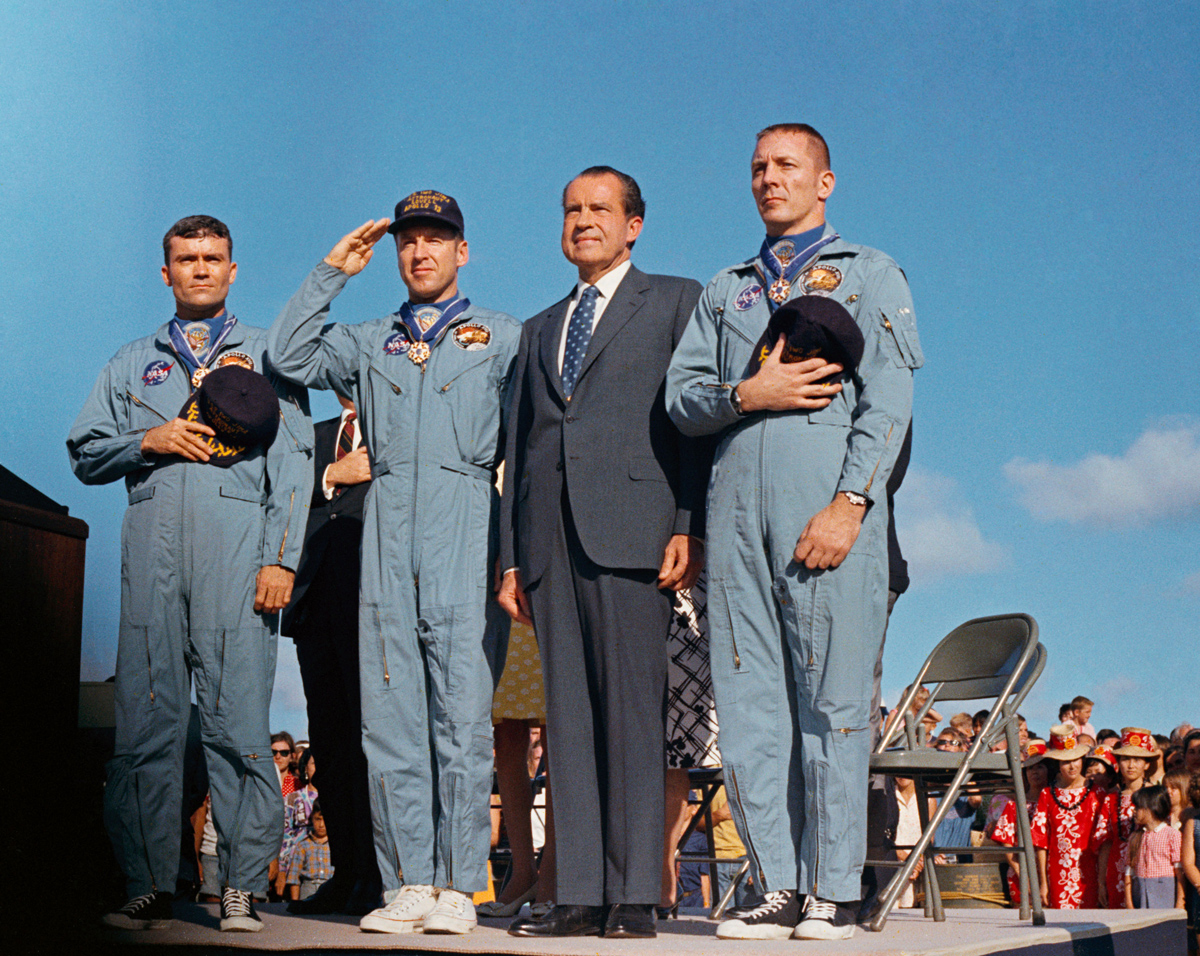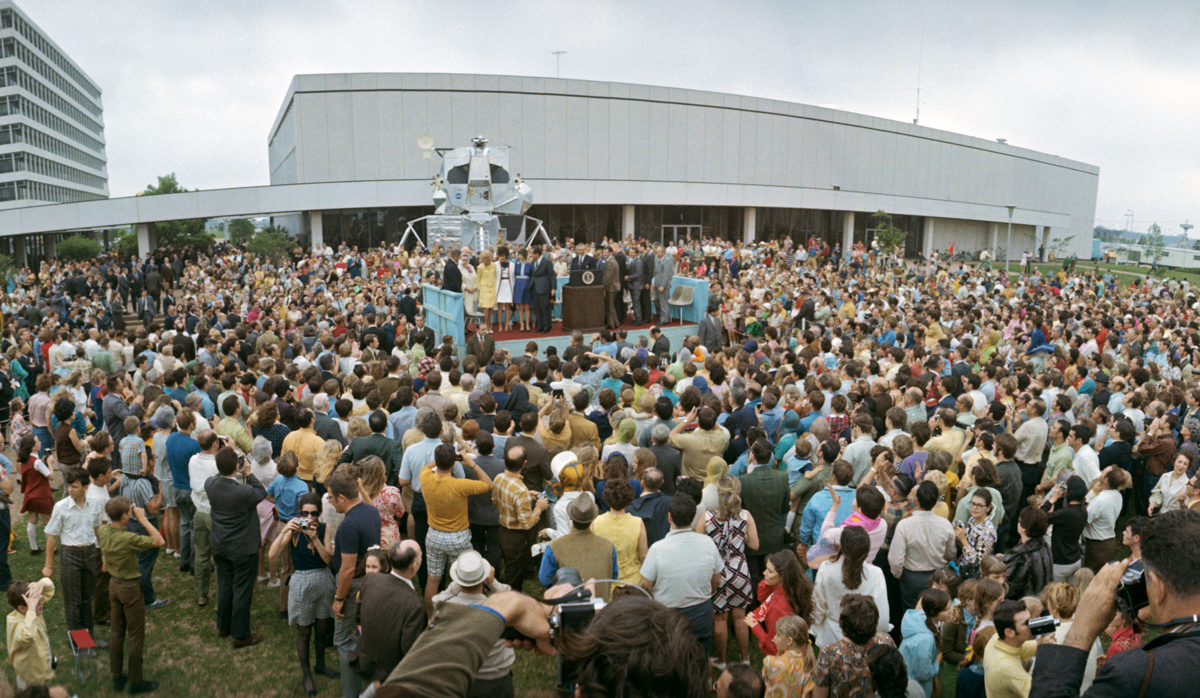Failure was not an option: NASA's Apollo 13 mission of survival in pictures
Almost home
At NASA's Mission Operations Control Room in Houston, two flight controllers oversee consoles as they watch the Apollo 13 command module drop through the sky toward the south Pacific Ocean with three NASA astronauts on board. Behind the camera, a large crowd of people gather to watch the splashdown and recovery operations from the control room.
A safe return
On April 17, 1970, NASA staff members, including NASA Administrator Thomas Paine (center), celebrate a successful Apollo 13 splashdown from inside the Mission Control Center of NASA's Manned Spacecraft Center in Houston. On the right, George Low, manager of the Apollo spacecraft program, smokes a cigar.
Splashdown
After hours of peril from the apparent explosion to re-entering Earth's atmosphere, the Apollo 13 astronauts made it back to Earth safely as the command module splashed down in the South Pacific Ocean on April 17, 1970, at 2:07 p.m. EDT (1807 GMT). The capsule splashed down only 4 miles (6 km) from the prime recovery ship. The three astronauts were safely transported by helicopter to the USS Iwo Jima.
Safe and sound
After the troublesome six-day mission, the Apollo 13 command module splashed down in the South Pacific Ocean, near Samoa, on April 17, 1970, safely delivering astronauts Jim Lovell, Jack Swigert and Fred Haise back to Earth.
Out of the module
On April 17, 1970, Apollo 13 lunar module pilot Fred Haise prepares for a ride in the "Billy Pugh" net up to a recovery Navy helicopter, which would take the astronauts from the splashdown site to the USS Iwo Jima, the prime recovery ship. Command module pilot Jack Swigert (center) and Cmdr. Jim Lovell (right) await their turn in the net as they sit in the life raft, while an underwater demolition team member from the U.S. Navy assists the crew.
Up, up and away
Sitting in a "Billy Pugh" net, Apollo 13 command module pilot Jack Swigert approaches the helicopter as his fellow astronaut Jim Lovell, the mission commander, waits below in the life raft. Above, lunar module pilot Fred Haise is already in the aircraft. Several U.S. Navy underwater demolition team swimmers aid in the recovery operations.
What a ride
Apollo 13 Cmdr. Jim Lovell is hauled up and into a helicopter in a "Billy Pugh" net, joining astronauts Jack Swigert and Fred Haise, as the Apollo 13 crew prepares to make their way to the USS Iwo Jima.
Breaking space news, the latest updates on rocket launches, skywatching events and more!
Command module retrieved
After the successful splashdown of the Apollo 13 command module and the three astronauts on board, crew from the USS Iwo Jima hoisted the spacecraft out of the water.
Back to business
Crewmembers of the troubled Apollo 13 mission exit the helicopter, boarding the USS Iwo Jima after a successful splashdown and recovery operation. Pictured here, from left, are lunar module pilot Fred Haise, Cmdr. Jim Lovell and command module pilot Jack Swigert.
Proud president
At April 18, 1970 post-mission ceremonies, President Richard M. Nixon and the Apollo 13 crew pay honor to the United States flag at Hickam Air Force Base in Hawaii. Nixon presented astronauts Jim Lovell (seen here saluting the flag), Jack Swigert (right) and Fred Haise (left) with the Presidential Medal of Freedom.
Welcoming crowds
A large crowd of onlookers watches President Richard M. Nixon bestow the Presidential Medal of Freedom upon the Apollo 13 Mission Operations Team — the highest civilian award.
Reward for work well done
On a stage outside Building 1 at the Manned Spacecraft Center in Houston, President Richard M. Nixon introduces Sigurd Sjoberg (right), the Director of Flight Operations at the Manned Spacecraft Center, and the four Apollo 13 flight directors — from left, Glynn Lunney, Gene Kranz, Gerald Griffin and Milton Windler. The team received the highest civilian honor, the Presidential Medal of Freedom.
OFFER: Save 45% on 'All About Space' 'How it Works' and 'All About History'!
<p>For a limited time, you can take out a digital subscription to any of <a href="https://www.space.com/your-favorite-magazines-space-science-deal-discount.html" target="_blank">our best-selling science magazines for just $2.38 per month, or 45% off the standard price for the first three months.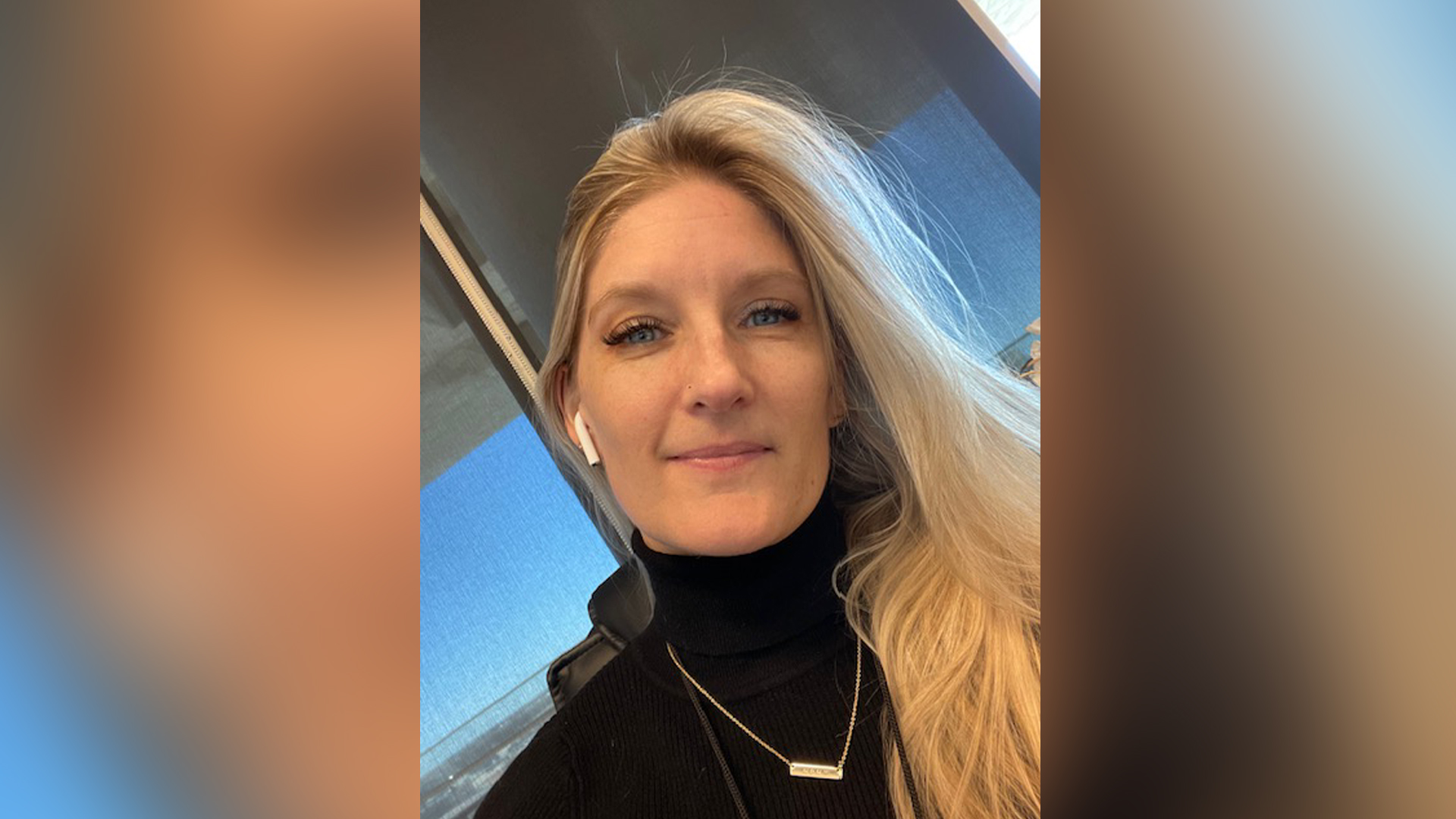
Christine Lunsford joined the Space.com team in 2010 as a freelance producer and later became a contributing writer, covering astrophotography images, astronomy photos and amazing space galleries and more. During her more than 10 years with Space.com, oversaw the site's monthly skywatching updates and produced overnight features and stories on the latest space discoveries. She enjoys learning about subjects of all kinds.
